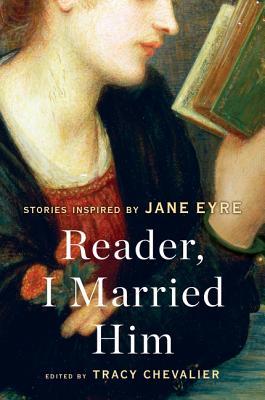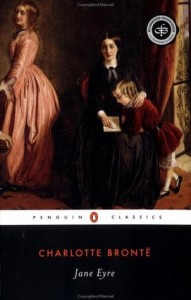 Reader, I Married Him: Stories Inspired by Jane Eyre by Tracy Chevalier, Joanna Briscoe, Susan Hill, Elizabeth McCracken, Nadifa Mohamed, Audrey Niffenegger, Patricia Park, Francine Prose, Namwali Serpell, Elif Shafak, Lionel Shriver, Salley Vickers, Emma Donoghue, Evie Wyld, Helen Dunmore, Esther Freud, Jane Gardam, Linda Grant, Kirsty Gunn, Tessa Hadley, Sarah Hall
Reader, I Married Him: Stories Inspired by Jane Eyre by Tracy Chevalier, Joanna Briscoe, Susan Hill, Elizabeth McCracken, Nadifa Mohamed, Audrey Niffenegger, Patricia Park, Francine Prose, Namwali Serpell, Elif Shafak, Lionel Shriver, Salley Vickers, Emma Donoghue, Evie Wyld, Helen Dunmore, Esther Freud, Jane Gardam, Linda Grant, Kirsty Gunn, Tessa Hadley, Sarah Hall Formats available: paperback, ebook, library binding, audiobook
Pages: 304
Published by William Morrow Paperbacks on March 22nd 2016
Amazon, Barnes & Noble, Kobo, Bookshop.org
Goodreads
This collection of original stories by today’s finest women writers—including Tracy Chevalier, Francine Prose, Elizabeth McCracken, Tessa Hadley, Audrey Niffenegger, and more—takes inspiration from the opening line in Charlotte Brontë’s most beloved novel, Jane Eyre.
A fixture in the literary canon, Charlotte Brontë is revered by readers all over the world. Her novels featuring unforgettable, strong heroines still resonate with millions today. And who could forget one of literature’s best-known lines: “Reader, I married him” from her classic novel Jane Eyre?
Part of a remarkable family that produced three acclaimed female writers at a time in 19th-century Britain when few women wrote, and fewer were published, Brontë has become a great source of inspiration to writers, especially women, ever since. Now in Reader, I Married Him, twenty of today’s most celebrated women authors have spun original stories, using the opening line from Jane Eyre as a springboard for their own flights of imagination.
Reader, I Married Him will feature stories by:
Tracy Chevalier
Tessa Hadley
Sarah Hall
Helen Dunmore
Kirsty Gunn
Joanna Briscoe
Jane Gardam
Emma Donoghue
Susan Hill
Francine Prose
Elif Shafak
Evie Wyld
Patricia Park
Salley Vickers
Nadifa Mohamed
Esther Freud
Linda Grant
Lionel Shriver
Audrey Niffenegger
Namwali Serpell
Elizabeth McCracken
Unique, inventive, and poignant, the stories in Reader, I Married Him pay homage to the literary genius of Charlotte Brontë, and demonstrate once again that her extraordinary vision continues to inspire readers and writers.
My Review:
 Just like it says on the label, this is a collection of short stories “inspired by” Jane Eyre. Before I get into the quality of the stories, I’d like to touch on that “inspired by” bit.
Just like it says on the label, this is a collection of short stories “inspired by” Jane Eyre. Before I get into the quality of the stories, I’d like to touch on that “inspired by” bit.
I’ll confess it has been a long time since I read Jane Eyre. And I’ll also say that it will probably be a long time, if ever, before I read it again. While it feels like a progenitor of the Gothic romance school, Jane’s situation as an impoverished governess, and her realistic lack of options just aren’t things that float my boat. I prefer situations where the hero and heroine at least approach equality, or get as close to it as seems remotely reasonable for the time period.
That being said, I approached this collection wondering how and where contemporary authors would take Jane and her story. The results feel mixed to me. Not just in the sense that any short story collection has winners and losers (and readers varying opinions on which are which) but also mixed in regards to their use of Jane Eyre as inspiration. There were stories that felt close to the original, and stories where the inspiration seemed tangential. Sometimes even tenuous.
Your mileage, of course, may vary.
But the stories in the collection that stick with me are the ones that hewed closely in some way to some aspect of the original story. The ones that seemed to use Jane as a looser starting point didn’t have the same impact for this reader. They felt like the didn’t fit within the collection unless one squints very hard and tilts one’s head to the proper degree sideways.
The title story by Susan Hill, is a case in point. While it takes off from the famous line, “Reader, I Married Him,” The “I” in this particular story is Wallis Warfield Simpson, and the “him” is Edward, Duke of Windsor, the man who was briefly King Edward VIII. The story felt sad, but then, their lives also felt sad, and possibly just as pointless as they are in this story. The story, while certainly interesting and providing a very different perspective on this famous couple, felt as if it had nothing to do with the theme at hand.
On the other hand, I loved Lionel Shriver’s “The Self-Seeding Sycamore”. Just as in the Susan Hill story, I’m not sure what, if anything it draws from Jane Eyre. On the other hand, I just really liked the story.
As far as those stories that have more a more obvious relationship to Jane Eyre, there were three that haunted me for different reasons, although they all have a slightly creepy factor.
Helen Dunmore gives an angry but resigned voice to one of the secondary characters in the story in “Grace Pool Her Testimony”. It allows us to view the story from a radically different point of view. It is also a “below stairs” story, where we see the doings of the household from the perspective of someone who was always present, but seemingly invisible. And the story provides insights into Rochester as a young man, and gives a surprising origin for little Adele. But it is Grace’s harsh and angry voice that sticks in the mind after the story is complete.
Salley Vickers tells us a story in Mr. Rochester’s voice in “Reader, She Married Me” but while the story is told from his perspective after the end of the novel, it is not the happily ever after one might expect. Instead, from Rochester’s point of view, blind and dependent on Jane as a result of his injuries from the fire, we see Jane quite differently. Instead of a triumphant heroine we see a manipulative woman who only married him because she now has the upper hand in their relationship, and that is what she has been scheming for all along. This isn’t a story about love, it’s a story about power.
Likewise, “The Mirror” by Francine Prose is also a story about power, but in this case all the power is in the hands of Rochester, although like the Vickers’ story The Mirror also takes place after the end of the novel. In this modern re-imagining, Jane and Rochester are in couples’ counseling after their marriage. As the years have gone by, Rochester has become increasingly insistent that his first wife died long before the fateful fire, and that Jane made up all of the incidents related in the story. And most telling of all, that it was a parrot that Jane heard in the attic. While Jane wants to save their marriage, Rochester is increasingly insistent that Jane is unbalanced, and both Jane and the reader see that he is setting her up to be put away in an attic somewhere, just like his first wife. As the net closes around her, Jane questions everything she thought she knew – both about the true condition of the first Mrs. Rochester and about Edward’s own sanity or the lack thereof.
The Mirror is the story that gave me the most chills. I found The Self-Seeding Sycamore to be the most fun. A few of the stories neither felt related to the theme, nor did anything for me as stories. But overall, the collection is interesting and certainly has a couple of bright spots – or brightly creepy spots, as the case may be.
Escape Rating B for the collection as a whole.

